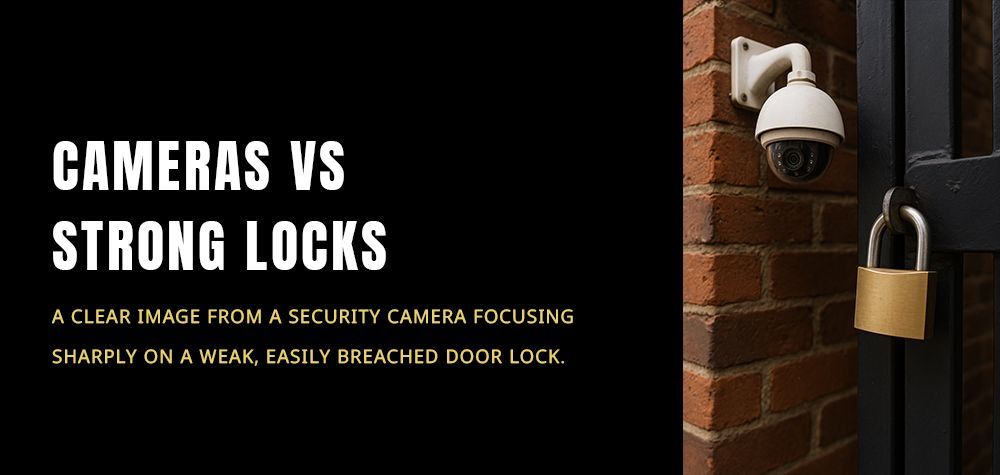Why Your Door Lock Keeps Freezing and How to Fix It
Imagine this: you come home on a freezing winter evening, exhausted and ready to relax. You reach for your keys, insert one into the lock, and... it won’t turn. You try again, applying more force, but nothing happens. Your lock is frozen solid, and now you're stuck in the cold. Sound familiar? If so, you’re not alone. A frozen door lock is a common wintertime nuisance that many homeowners face. But why does it happen, and more importantly, how can you fix it without causing damage? Let's dive into the causes, solutions, and preventative measures to keep your locks working smoothly all winter long.
How to Remove a Broken Key from a Lock Without Damage
Why Does Your Door Lock Keep Freezing?
1. Moisture Infiltration
The primary reason for a frozen lock is moisture. When water or condensation seeps into the keyhole, it can freeze when temperatures drop, turning your lock into an ice cube. If you’ve ever noticed condensation forming on your door or lock, that moisture could be your main culprit.
2. Fluctuating Temperatures
Winter isn't just cold—it’s unpredictable. One day it’s slightly warm, melting the ice, and the next, temperatures plummet, causing water to freeze inside your lock. This constant freeze-thaw cycle can lead to recurring issues.
3. Metal’s Natural Cold Retention
Metal is an excellent conductor of cold. If your lock is exposed to direct wind or mounted on a metal door, it will freeze faster than a lock on a wooden or insulated door.
4. Poorly Lubricated Locks
Over time, locks need lubrication to function correctly. Without proper lubrication, ice can form more easily inside the mechanism, making it impossible to turn your key.
5. Snow and Ice Buildup Around the Door
If snow accumulates around your door, it can eventually melt and seep into the lock. Once temperatures drop again, that melted snow turns into ice inside the locking mechanism.
How to Fix a Frozen Door Lock (Without Breaking It!)
So, your lock is frozen—now what? Before you reach for a blowtorch (please don’t do that), try these safe and effective methods to get your lock working again.
1. Use a Lock De-Icer
Lock de-icers are specifically designed to melt the ice inside your lock without causing damage. They usually contain isopropyl alcohol, which lowers the freezing point of water and helps dissolve the ice.
2. Heat Your Key (Carefully)
One simple trick is to heat your key before inserting it into the lock. Hold the key over a lighter or a match for a few seconds, then gently insert it into the lock. The heat should help melt the ice inside.
3. Apply Hand Sanitizer
If you don’t have a de-icer on hand, hand sanitizer can work in a pinch. Most sanitizers contain alcohol, which can help break down ice inside the lock. Just apply a small amount to your key and insert it into the lock.
4. Try a Hairdryer
If your lock is heavily iced over, a hairdryer can be an effective solution. Plug in an extension cord, turn on the hairdryer, and direct warm air at the lock until the ice melts.
5. Use Graphite Powder or Dry Lubricants
Once your lock is thawed, it’s important to lubricate it to prevent refreezing. Graphite powder or dry lubricants work best because they won’t attract moisture like oil-based lubricants can.
Risks of Ignoring a Frozen Lock
A frozen lock isn’t just an inconvenience—it can lead to bigger problems if not addressed properly.
1. Broken Keys
If you force a key into a frozen lock and twist too hard, you risk breaking the key inside. Now, instead of just a frozen lock, you’ve got a jammed one.
2. Internal Lock Damage
Repeated freezing and thawing can cause internal parts to weaken, reducing the overall lifespan of your lock.
3. Getting Locked Out
If your lock freezes frequently, there’s a good chance it could leave you stranded outside in dangerously cold weather.
How to Prevent Your Door Lock from Freezing Again
1. Keep Your Lock Dry
Moisture is the enemy. Wipe down your lock after rain or snow to prevent water from seeping in.
2. Use a Lock Cover
A simple lock cover can protect your keyhole from snow, ice, and freezing temperatures.
3. Regularly Lubricate Your Lock
Apply graphite powder or a dry lubricant before winter starts to keep things running smoothly.
4. Install a Storm Door
If your main door is exposed to the elements, adding a storm door can provide an extra layer of insulation and protection.
5. Heat Tape or Insulation
For extreme climates, consider installing heat tape around the door or using insulation to minimize exposure to frigid air.
When to Call a Professional Locksmith
If you’ve tried everything and your lock still won’t budge, it might be time to call in a professional. Brothers Locksmith specializes in handling frozen locks, repairing damaged keyholes, and ensuring your locks are winter-ready. Sometimes, a frozen lock is just the symptom of a deeper issue, such as internal rust or misalignment. A locksmith can diagnose and fix these problems before they leave you locked out in the cold.
The Bottom Line
A frozen lock is one of winter’s many annoyances, but it doesn’t have to ruin your day. Understanding why it happens, how to fix it safely, and how to prevent it in the future can save you time, frustration, and even money on costly repairs.
The best approach? Be proactive. A little preparation now—like keeping your lock dry, lubricating it regularly, and using a lock cover—can mean the difference between getting inside quickly and standing outside in the freezing cold. But if all else fails, don’t hesitate to call a trusted locksmith for help.
Stay warm, stay prepared, and never let a frozen lock stand between you and a cozy home!
Call Us Any Time!






